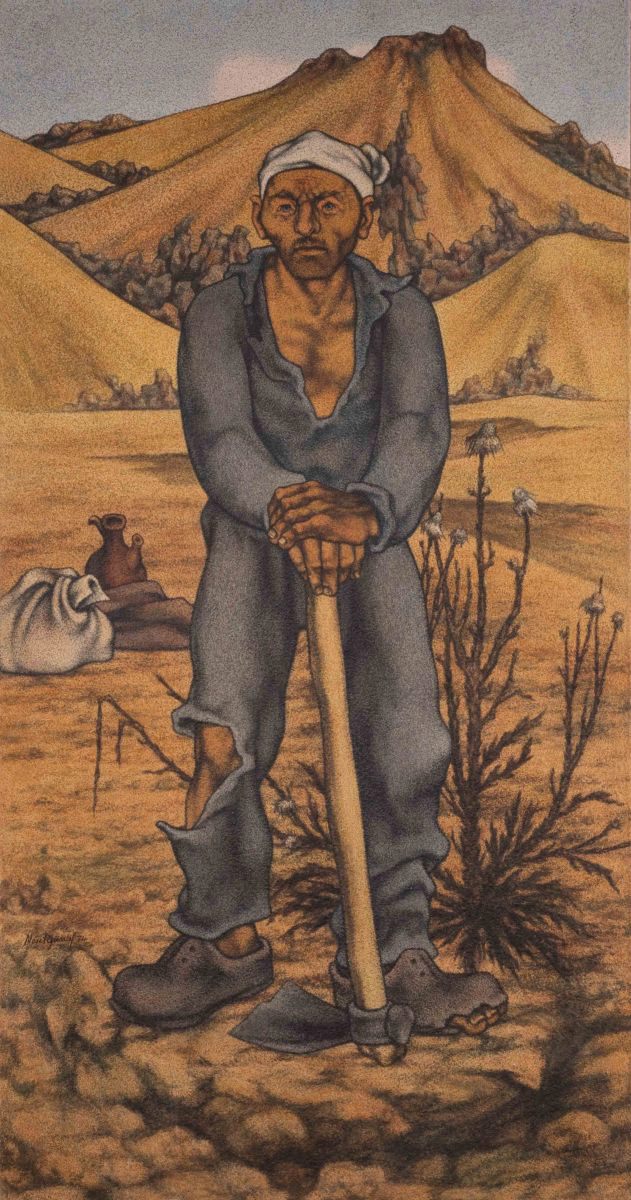- Open Today: 10.00–18.00
- Ticket
- Shop
- Membership
- TR EN

Neşet Günal, 1923-2002
Earth Man, 1974
Neşet Günal entered the Academy of Fine Arts in 1939 and studied under Léopold Lévy. He graduated in 1946 at the top of his class. In 1948 he earned a European scholarship with which he went to France, where he initially worked in the studios of André Lhote and Fernand Léger.
In Günal’s drawings and paintings, the figure always has a monumental quality, and the subject and context are woven around the figure. The people always look firm, strong, and resilient, whatever their circumstances. These figures are not independent from the places they inhabit, but are rather imprinted with the geography in which they exist, from its landforms and architectural characteristics to its sky and earth. In this sense, Günal transformed into symbols the social realities he observed and the details that characterized them.
The paintings situate people as the main elements, especially the “earth men” of his native Nevşehir region and their hardships as they struggle to survive. Günal believed that art has a social function—that a close relationship exists between the utility and the reality of art. “Earth Man”, with his stance, hands, feet, clothes, the thorny plant at his feet, and the lunch sack and jug behind him, has a striking and powerful effect that immediately conveys his life story. Through a distinctive technique characterized by his choice of materials and colors, Günal focuses on the culture of agriculture in Anatolia, the unseen aspect of the everyday lives of seasonal workers, and the harsh living conditions they and their families face.
Painting
Oil on canvas
Istanbul Museum of Modern Art Collection
Oya - Bülent Eczacıbaşı Donation